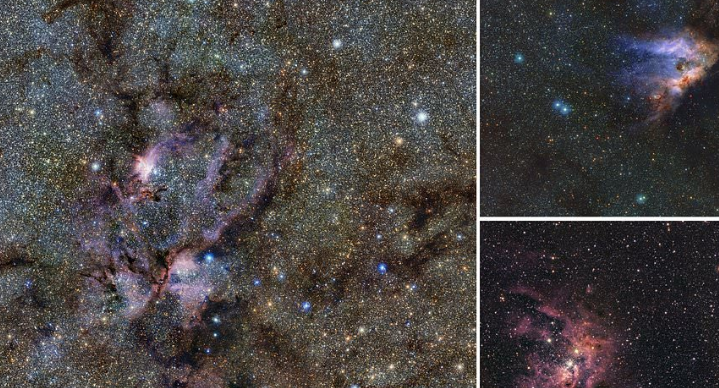Beneath the shimmering veil of the Milky Way… unseen by human eyes, there lies a tapestry of mysteries, stitched together by light older than time. For years, the heavens kept their secrets close, but now—through the patient work of astronomers—a map has emerged, revealing the heart of our galaxy in ways we never thought possible. This isn’t just a map of stars and dust—it’s a portrait of 1.5 billion celestial bodies, traced by the quiet hum of infrared light.
The #MilkyWay as you’ve NEVER seen it before: Scientists reveal the most detailed infrared map of our #galaxy yet – showing 1.5 billion moons, stars, and planets in unprecedented detail pic.twitter.com/HIMXm1P6jJ
— Hans Solo (@thandojo) September 27, 2024
They worked for over 13 years, watching—night after night—the central regions of the Milky Way through the lens of the VISTA telescope. And what they saw wasn’t always visible to the naked eye. No, these were the hidden things, the cool whispers of failed stars—brown dwarfs, too faint to burn, too stubborn to disappear. Planets, wandering through the cosmic ocean, unanchored by any star… floating in silence, in solitude. The map they created stretches across an expanse as large as 8,600 full moons, a landscape of starlight far beyond anything drawn before.
Dante Minniti, the dreamer leading this celestial odyssey, speaks with wonder at what they’ve uncovered. “We’ve changed how we see the galaxy,” he muses—each discovery, each flicker of light pushing the boundaries of what we thought we knew. It’s not the end of exploration… only the beginning. Somewhere in those dark reaches, the unknown continues to whisper its riddles.
Astronomers have created the most detailed infrared map of the Milky Way, containing over 1.5 billion objects. The map was made using 13 years of observations and has changed the view of our galaxy forever. pic.twitter.com/c9Yxg3VfYI
— Science In 60 Mins (@ScienceIn60Mins) September 26, 2024
Infrared light… the invisible thread. It’s this light that allows them to peer past the curtains of dust and gas, into the hidden places of the galaxy’s core. Where our eyes fail, the telescope translates that light, pulling images from the darkness… crafting a vision of what lies beyond. Over 200,000 snapshots, each one a puzzle piece in a cosmic mosaic, fused together in the form of 500 terabytes of data. It’s a colossal task, the largest ever carried out with an ESO telescope. But it’s more than just data—it’s a gateway to understanding the stories the stars have written.
Dr. Oscar Gonzalez, one of the many dreamers who helped shape this vision, speaks of the map like it’s a window—opening up to the Milky Way’s hidden architecture. This is just the start, he says… a doorway that will lead to discoveries far beyond what we’ve yet imagined. And so, the sky becomes less a mystery, more a poem in light… unfolding.
Major Points
- After 13 years of study, astronomers have mapped 1.5 billion celestial bodies in the Milky Way’s core using the VISTA telescope and infrared light.
- The map reveals hidden brown dwarfs, faint planets, and celestial objects previously invisible to the naked eye.
- Covering an area 8,600 times larger than the full moon, the map was built from 200,000 infrared images and 500 terabytes of data.
- Dante Minniti, the project leader, emphasizes the map’s ability to change our understanding of the galaxy’s structure and unknown realms.
- This groundbreaking work opens new pathways for future discoveries about the stars, planets, and mysteries in our galactic neighborhood.
Lap Fu Ip – Reprinted with permission of Whatfinger News


